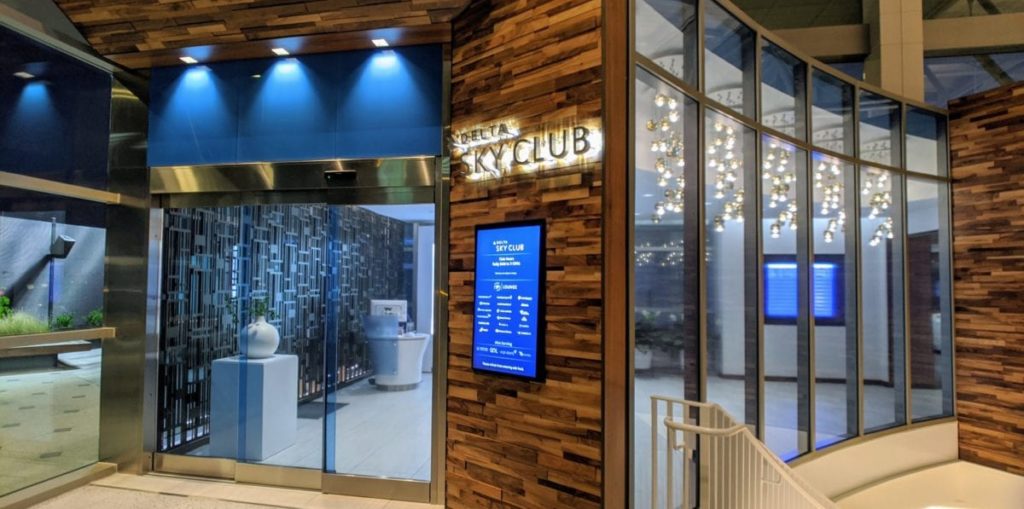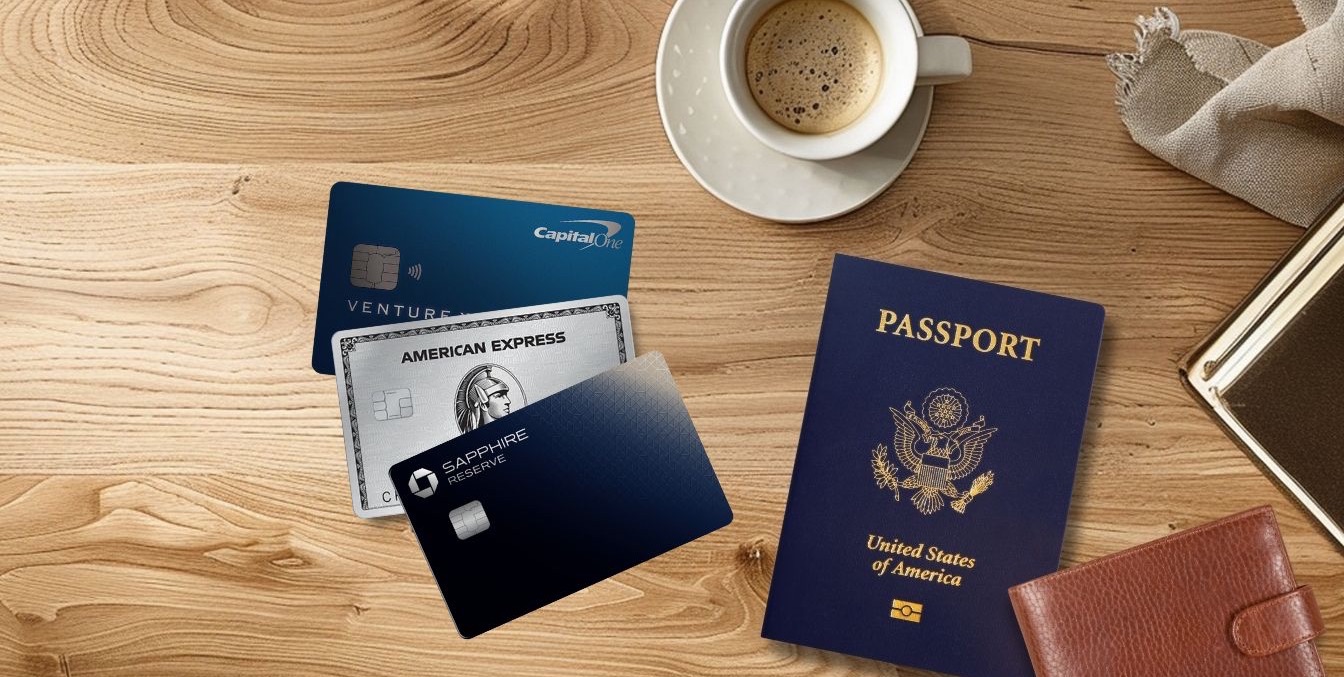There are dozens, even hundreds, of travel cards out there to pick from … but three of them are a clear cut above the rest: The *chase sapphire reserve*, the *amex platinum*, and the *venture x*.
These aren't introductory cards for the average Joe or Jane, but rather powerful weapons for the frequent traveler … with big annual fees, to boot. And while those annual fees may scare some off, all three of these cards come with valuable perks that can easily offset your out-of-pocket cost.
After recent overhauls on both the Chase Sapphire Reserve and Amex Platinum, and a huge new welcome bonus offer on the Capital One Venture X, it's time to put these three titans of travel rewards under the microscope. Which card comes out on top? Which premium perks are most valuable? And could it make sense to hold more than one?
We'll break down everything you need to know, category by category, for beginners or even advanced travelers to decide which premium travel card suits them best.
Related reading: Travel Cards Are Entering a New Era … & It’s An All-Out Race to The Top
Annual Fee Comparison
Let’s get the sticker shock out of the way: Most premium cards come with a premium price tag – and these three are no exception. But you'll quickly see that even though none of these cards are exactly cheap, one is clearly more budget-friendly than the others.
Back in June, Chase gave the Sapphire Reserve a major update – increasing the card's annual fee to annual_fees. Following Chase's lead, Amex made a big update of its own to the Platinum Card in September … pushing the annual fee up to a whopping annual_fees each year (see rates & fees).
So what did Capital One do? Absolutely nothing … and we couldn't be happier about it. At just $395 per year, the Capital One Venture X Rewards Credit Card is half the price of the Sapphire Reserve and Amex Platinum. And it's by design …
In an interview with Thrifty Traveler when the Venture X card launched, Capital One executives didn't exactly hold back when talking about the card's annual fee.
“Right now, there is a gap in the market as (travelers) are looking for the right travel card. They don't want to pay $600 for a card that has travel benefits. And they don't want to have to take the time to continue to track a laundry list of benefits that they have to remember to register for,” said Lauren Liss, Capital One's managing vice president of U.S. card.
So far, Capital One has delivered on that promise with a premium card with a much lower annual fee … along with an easy path to fully recoup it. While we question how long Capital One can keep the fee where it is, its much lower price tag makes it the clear winner in this category.
Winner: *venture x*
Welcome Offers
When you are paying $395 to $895 for a premium travel rewards card, getting a huge welcome bonus of points or miles is practically essential. Without it, each of these cards would be a tough sell.
Here's what these three cards have to offer when it comes to a big bonus.
The Chase Sapphire Reserve®
bonus_miles_full
The Capital One Venture X Rewards Credit Card
bonus_miles_full.
The American Express Platinum Card®
bonus_miles_full
Which Offer is Best?
With Chase and Capital One, what you see is what you get. But with Amex, you'll have to submit your application before you see what offer (if any) you're targeted for.
No matter how you slice it, these are all great offers that can easily offset the annual fee in year one and beyond. But if you are targeted for the biggest possible welcome offer on the Platinum Card, it's hard to beat.
Winner: *amex platinum*
Earning Bonus Points
Beyond the initial welcome offer, you'll earn points every time you swipe your card to make a purchase. At a minimum, you'll earn 1x points for every dollar you spend – or much more – with each of these cards.
No matter which one you choose, you'll earn bonus points on specific spending categories, helping you add to your stash of points. But they vary wildly, so let's look at what's available on all three of these cards.
The Chase Sapphire Reserve®
With the Chase Sapphire Reserve, you'll earn 3x points per dollar spent on dining at restaurants worldwide (including takeout).
You'll also earn 4x points per dollar spent on flights and hotels booked directly, and you'll earn 8x points per dollar spent on any Chase Travel bookings. It's worth noting that the first $300 spent on travel purchases annually will be covered by Chase's flexible travel credit (more on this in a bit) and won't earn any points.
Finally, you'll earn 5x points per dollar spent on Lyft rides – but only through Sept. 30, 2027.
All other purchases earn 1x points per dollar spent.
The Capital One Venture X Rewards Credit Card
With the Capital One Venture X card, you'll earn 10x Capital One Miles on hotels and rental cars and 5x Miles on flights and vacation rentals booked through Capital One Travel.
But most importantly, you'll earn unlimited 2x miles for every other dollar you spend on the card … no matter what category you're spending in.
The American Express Platinum Card®
With the Amex Platinum Card, you'll earn 5x points per dollar spent (up to $500,000 per year) on airfare directly with any airline, or through American Express Travel®. You'll also earn 5x points per dollar spent on prepaid hotels booked through Amex Travel.
You'll earn 1x points per dollar spent on all other purchases.
Because you can earn 5x points per dollar spent on airfare booked directly with the airline or through Amex Travel, we think the Platinum Card is the best option for booking flights.
Related reading: The Biggest Mistake You're Making With Your Amex Platinum Card
Which Card is Best for Earning Points?
There's no clear-cut right answer here – it will largely depend on where you spend the most money. Earning 2x miles per dollar spent on all purchases with the Capital One Venture X is pretty tough to beat, but the other cards' bonus categories could make them more attractive for some.
No matter which card you hold, the best way to maximize your spending likely involves other cards in combination with one (or more) of these cards.
Airline & Hotel Transfer Partners
All three of these cards earn transferable points (or miles), allowing you to send them directly to a dozen or more airline and hotel programs. While it might feel daunting at first, it's the key to getting more value out of your points.
But the list of options varies from card to card. Here's what each card and program has to offer.
The Chase Sapphire Reserve®
Chase is a titan in the travel rewards industry, and that’s due in large part to some excellent transfer partners.
Ultimate Rewards points will transfer at a 1:1 ratio to all programs. That means one Chase Ultimate Reward point equals one hotel point or airline mile.
| Program | Type | Transfer Ratio | Transfer Time |
|---|---|---|---|
| Aer Lingus | Airline | 1:1 | Instant |
| Air Canada Aeroplan | Airline | 1:1 | Instant |
| Air France/KLM | Airline | 1:1 | Instant |
| British Airways | Airline | 1:1 | Instant |
| Iberia Plus | Airline | 1:1 | Instant |
| JetBlue | Airline | 1:1 | Instant |
| Singapore Air | Airline | 1:1 | 12-24 hours |
| Southwest Airlines | Airline | 1:1 | Instant |
| United Airlines | Airline | 1:1 | Instant |
| Virgin Atlantic | Airline | 1:1 | Instant |
| World of Hyatt | Hotel | 1:1 | Instant |
| IHG | Hotel | 1:1 | 1 day |
| Marriott Rewards | Hotel | 1:1 | 2 days |
Read up on Chase transfer partners, including how to transfer your points and which options here are best!
The Capital One Venture X Rewards Credit Card
Capital One is a relatively new entrant to the world of transferable points, but over the years, it has steadily added more partners to the mix.
Best of all, Capital One improved its transfer ratio years ago by making nearly all of them 1:1. This means that 1 Capital One mile gets you 1 airline mile or hotel point.
Here's the list of options:
| Program | Type | Ratio | Transfer Time |
|---|---|---|---|
| Aeromexico | Airline | 1:1 | Instant |
| Air Canada Aeroplan | Airline | 1:1 | Instant |
| Air France/KLM | Airline | 1:1 | Instant |
| Avianca LifeMiles | Airline | 1:1 | Instant |
| British Airways | Airline | 1:1 | Instant |
| Cathay Pacific AsiaMiles | Airline | 1:1 | Up to five business days |
| Emirates | Airline | 1:1 | Instant |
| Etihad | Airline | 1:1 | Up to 1 day |
| EVA Air | Airline | 2:1.5 | Up to five business days |
| Finnair | Airline | 1:1 | Instant |
| Japan Airlines | Airline | 2:1.5 | Instant |
| JetBlue | Airline | 2:1.2 | TBD |
| Qantas | Airline | 1:1 | Instant |
| Qatar Airways | Airline | 1:1 | TBD |
| Singapore | Airline | 1:1 | Instant |
| TAP Air Portugal | Airline | 1:1 | Same day |
| Turkish Airlines | Airline | 1:1 | Same day |
| Virgin Red | Other | 1:1 | Same day |
| Accor | Hotel | 2:1 | Up to two business days |
| Choice Hotels | Hotel | 1:1 | Same day |
| Preferred Hotels & Resorts | Hotel | 1:2 | TBD |
| Wyndham | Hotel | 1:1 | Same day |
Read our guide on how to transfer Capital One miles!
The American Express Platinum Card®
American Express currently has 20 different airline and hotel partners – including some really valuable standout options.
While that flexibility and easy earning opportunities make Membership Rewards points a must for any frequent traveler, there are a few downsides to keep in mind.
First, American Express charges a very small fee (.06 cents per point) on transfers to domestic airlines. So if you transfer 100,000 points to Delta or JetBlue, you’ll get charged $60. These fees are capped at $99.
Here’s the full list:
| Program | Type | Transfer Ratio | Transfer Time |
|---|---|---|---|
| Aer Lingus | Airline | 1:1 | N/A |
| AeroMexico | Airline | 1:1.6 | 2-12 days |
| Air Canada Aeroplan | Airline | 1:1 | Instant |
| Air France/KLM | Airline | 1:1 | Instant |
| ANA | Airline | 1:1 | 1-2 days |
| Avianca | Airline | 1:1 | Instant |
| British Airways | Airline | 1:1 | Instant |
| Cathay Pacific | Airline | 1:1 | Instant |
| Delta | Airline | 1:1 | Instant |
| Emirates | Airline | 1,000:800 | Instant |
| Etihad | Airline | 1:1 | Instant |
| Iberia | Airline | 1:1 | 1-3 days |
| JetBlue | Airline | 1.25:1 | Instant |
| Qantas | Airline | 1:1 | Instant |
| Qatar Airways | Airline | 1:1 | Instant |
| Singapore | Airline | 1:1 | Instant |
| Virgin Atlantic | Airline | 1:1 | Instant |
| Choice Privileges | Hotel | 1:1 | Instant |
| Hilton Honors | Hotel | 1:2 | Instant |
| Marriott Bonvoy | Hotel | 1:1 | Instant |
Read our full guide to Amex transfer partners, how they work, and how to get the most out of them!
Which Points Program is Best for Transfers?
The answer to this question largely depends on which partners you will use the most.
As you'll see, there is a lot of overlap between the three programs. For example, you can transfer points from all three banks to Air Canada Aeroplan, Singapore Airlines, Virgin Atlantic, and more.
Capital One's largest weak spot is that it doesn't have a U.S.-based airline transfer partner other than JetBlue. Meanwhile, Chase has United, Southwest, and JetBlue – and Amex has both Delta and JetBlue.
Chase really stands out because points transfer to all its partners on a 1:1 basis. That includes World of Hyatt, the most valuable hotel loyalty program in the world and arguably the best transfer partner of all three banks, period.
Determining which card has the best transfer partners will likely depend on your specific travel goals. But for our money, Chase ekes out a win here.
Winner: *chase sapphire reserve*
Travel & Other Statement Credit Credits
All three of these premium travel cards offer statement credits for different things that can drastically offset the out-of-pocket expense you'll pay to hold these cards.
Some are easier to use than others. But no matter which card you carry, using these credits is the key to making the annual fee math work.
Let's take a look at what each card offers.
The Chase Sapphire Reserve®
Just for holding the Chase Sapphire Reserve, you'll get an annual $300 travel credit.
This annual travel credit is one of the most lucrative benefits of any travel credit card … and it's also one of the easiest to use. With that $300 travel credit, you can essentially think of the Sapphire Reserve's annual fee as being $495 a year.
Any purchase that Chase considers travel will qualify for the $300 annual travel credit on the Chase Sapphire Reserve. And that covers a lot of ground, including many expenses you might not normally consider “travel,” like tolls, public transit, and parking fees. For a full list of purchases that Chase will code as travel, visit the FAQs on Chase's credit cards rewards page.
In addition to the $300 annual statement credit, Chase Sapphire Reserve cardholders also get the following statement credits:
- Up to a $120 credit for Global Entry, TSA PreCheck®, or NEXUS every four years stays.
- Up to $500 in annual hotel credits for 1,100-plus properties in Chase Travel's “The Edit” portfolio with additional benefits like a $100 onsite credit, complimentary breakfast for two, space-available upgrades, and more
- Split into two, $250 credits available from January through June and again from July through December. Must book at least a two-night stay
- Up to a $300 annual dining credit at select “Sapphire Reserve Dining” restaurants bookable through OpenTable
- Split into two, $150 credits available from January through June and again from July through December
- Complimentary subscriptions to Apple TV+ and Apple Music – up to a $250 value
- Up to a $300 annual StubHub credit for concert and event tickets
- Split into two, $150 credits available from January 1 through June 30, and again from July 1 through December 31 for purchases on StubHub.com and viagogo.com. Activation required.
- Up to $120 in Peloton credits annually towards memberships, split into $10 monthly allotments
- Cardholders will still earn 10x points on Peloton equipment and accessories
- Up to $120 in Lyft credits annually, split into $10 monthly allotments
- Up to $300 for DoorDash annually, including two up to $10 monthly discounts toward non-restaurant orders, up to $5 a month off restaurant orders, and a complimentary DashPass membership
The Capital One Venture X Rewards Credit Card
Like the Sapphire Reserve, the Venture X card offers an annual $300 travel credit. But there is a catch…
In order to get the $300 credit, you must book your flight, hotel, vacation rental, or rental car through Capital One Travel. Booking directly with an airline, hotel, or any other travel company won't cut it.
That may seem like a downside to some travelers who would much rather book their travel directly with an airline, hotel chain, or rental car agency. Still, it should be incredibly easy for almost any traveler to use up that $300 credit each year, and it essentially makes the card's annual fee more like $95.
And starting in year two, you'll get a 10,000-mile anniversary bonus (worth a minimum of $100 towards travel) after paying your annual fee. With these two credits alone, you can easily get $400 in value for a card that costs you just $395 a year – not a bad deal for most travelers!
Like every other card on this list, there's also a credit of up to $120 to cover the cost of either TSA PreCheck® or Global Entry.
The American Express Platinum Card®
Last but not least, we have the Platinum Card. This card offers so many different credits each year, keeping track of them feels like a full-time job. In fact, we've recently designed a spreadsheet to do just that.
But using these credits is the key to justifying the Platinum Card's $895 annual fee. Here's a list of the credits the card offers:
- Up to a $200 Airline Incidental Fee Credit: Each year you hold the Platinum Card, you get up to a $200 credit to use with one U.S. airline of your choice. The credit is intended to be used for incidental fees like checked bags, change or cancellation fees, seat assignments, lounge access, and more, but there are some workarounds you can use to put that credit toward covering airfare instead. Check out our guide on how to maximize Amex airline fee credits!
- Up to a $600 Hotel Credit: Get up to $300 semi-annually for prepaid hotel bookings through the Amex Travel booking portal. This credit only applies to Fine Hotels + Resorts® or Hotel Collection properties, which include some great resorts and hotels around the globe. Notably, stays at Hotel Collection properties require a minimum stay of two consecutive nights.
- Up to a $400 Annual Resy Credit: Platinum cardholders now get up to $100 in statement credits each quarter (for up to $400 each year) for dining purchases at more than 10,000 U.S. Resy-partner restaurants.
- Up to a $300 Lululemon Credit: Cardholders can now get up to $75 back each quarter (up to $300 a year) on purchases at U.S. Lululemon retail stores (excluding outlets) or online at lululemon.com.
- Up to $200 of Annual Uber Cash: Each year you hold the Platinum Card, you get up to $200 toward Uber Cash. You get $15 each month, and $35 in the month of December (for $200 total annually).
- $120 Uber One Credit: Cardholders can now get up to $120 back each year when they use their Platinum to cover the entire cost of an Uber One membership
- Up to $300 Digital Entertainment Credit: Cardholders can get up to $300 in annual statement credits for select entertainment services, with monthly installments of $25. But this benefit is incredibly restrictive: It currently only applies to purchases or subscriptions with Disney+, The Disney+ Bundle, ESPN+, Hulu, Peacock, The New York Times, the Wall Street Journal, Paramount+, YouTube TV, and YouTube Premium.
- Up to $100 Annual Credit for Saks Fifth Avenue: Each year of card membership, you will get two $50 credits to be used at Saks Fifth Avenue stores. One $50 credit is available from January through June, with another available from July through December.
- Up to $300 Equinox Credit
- Up to a $200 Oura Ring Credit: Platinum cardmembers can now get up to $200 back each year toward a purchase at Ouraring.com, including the sleek Oura Ring wearable that’s become a favorite for fitness and wellness tracking.
- Credit for Global Entry or TSA PreCheck®: Like every other card on this list, there's also a credit of up to $120 to cover the cost of either TSA PreCheck or Global Entry on the Platinum Card.
- A $209 Credit for CLEAR® Plus: Platinum cardholders get a $209 annual credit for the privately run security program. Just pay for your membership with your Platinum Card and the credit should kick in automatically.
- Monthly Walmart+ Credit: Cardholders receive a $12.95 monthly credit to cover the cost of Walmart+, the retail giant's response to Amazon Prime with free shipping, same-day local delivery, and discounts at the gas pump. This also includes a Paramount+ membership.
Which Card has the Best Statement Credits?
While the Amex Platinum offers a ton in terms of potential dollar value, some of these credits require a lot of effort to use … and others have questionable value in the first place. Still, most travelers shouldn't have to work too hard to recoup their annual fee and come out ahead. For that reason, it easily takes this category.
Winner: *amex platinum*
Lounge Access
When it comes to making your next trip or long layover better, nothing goes further than having airport lounge access.
At the very least, you’ll find comfortable seating with a place to charge your phone, high-speed Wi-Fi, and free food and drinks. Some lounges take it to the next level with over-the-top amenities and great design.
While there are many ways to get airport lounge access, the easiest way boils down to what’s in your wallet: All three of these cards can get you into thousands of airport lounges (and counting).
Here's what each of card offers.
The Chase Sapphire Reserve®
The Sapphire Reserve is your ticket into the growing list of Chase Sapphire-branded lounges. Over the last couple of years, Chase has been playing catch-up with American Express and lapping Capital One with its network of lounges.
These aren't your average, run-of-the-mill airport lounges, either. Chase has upped the ante with each new lounge it debuts: The designs are all chic and spacious, the complimentary food and drinks are a big step above your typical airport club, and many feature upscale amenities like showers and wellness areas.
Chase Sapphire Reserve cardholders get complimentary access for themselves and two guests at all of Chase's Sapphire Lounge locations.
The card also comes with a complimentary Priority Pass Select membership, which gives you free access to an additional thousand-plus airport lounges around the world. You can also bring up to two guests into these lounges for free.

Priority Pass lounges can be a bit of a mixed bag: Some are great, while others are fairly lackluster. But no matter what, it's a better place to relax before your flight than the terminal, grabbing a quick snack or a drink for free.
Read More: Chase is Winning the Airport Lounge Wars… & It's Not Close
Capital One Venture X Rewards Credit Card
Like Chase, Capital One has its own branded airport lounges … but its footprint is much smaller. With just five lounges currently open for business, Capital One won't win any awards for quantity – but quality is a whole different discussion.
Each lounge is a bit different, but they've all got a great design, fun amenities, and absolutely outstanding food and drinks – easily among the best airport lounges in the U.S., period. Capital One puts a big emphasis on offering excellent food and drinks, with a local flair – and once you're in the door, it's all free.
The Venture X will also get you free access to Capital One Landings: the bank's hybrid airport lounge-restaurant mashup. So far, there's just a single Capital One Landing open at Washington, D.C.'s Reagan National Airport (DCA), with another planned for New York's LaGuardia Airport (LGA).
Finally, the Capital One Venture X will also comes with a complimentary Priority Pass Select membership, giving you access to even more airport lounges across the world. Again, the quality and offerings in Priority Pass lounges can vary quite a bit. But even the worst Priority Pass lounge is still better than sitting at the gate in the terminal.
Venture X cardholders get unlimited complimentary access for themselves and two guests at all these lounges until Feb. 1, 2026. At that time, guests will incur an extra cost … unless you spend $75,000 per year on your card.
The American Express Platinum Card®
The Platinum Card is without question the top dog of travel cards, offering complimentary airport lounge access. No card will get you into more airport lounges than the Amex Platinum Card, period.
For starters, there's American Express' signature Centurion® Lounges. With 20-plus locations around the U.S. and abroad, these lounges have set the bar high … though, they've fallen off some in recent years. Platinum cardholders get unlimited complimentary access for themselves, but no free guests … unless you spend $75,000 per year on your card.
Each and every Centurion Lounge offers a full buffet, free beer, wine, and cocktails; and even spa services in some locations. There’s comfortable seating, power outlets, quiet spaces to work, and more.
Read more: Master Guide to Amex Centurion Lounges: Locations, Access & More

If you frequently travel through any airport with a Centurion Lounge, the Platinum Card can be a slam dunk for that reason alone. Check out our YouTube video review of the Centurion Lounge in Denver (DEN).
Like its competitors, the Platinum Card also offers Priority Pass Select membership. You'll get unlimited visits to these locations and can bring in two guests with you for free.
Next, if you often fly Delta, the Platinum Card might just be the best card for you. Just for holding the card, you'll get complimentary access to anyDelta Sky Club® (10 visits per year, Feb. 1 – Jan. 31), so long as you are flying Delta. However, bringing a guest with you comes with an added fee: You can pay for up to two guests for $50 each.
Read more: How to Access the Delta Sky Club®

Finally, in addition to the top-notch lounges above, the Amex Global Lounge Collection will get you into a handful of other smaller lounge networks.
The Escape Lounge – Centurion Studio Partner lounge network is solid – in fact, the Minneapolis-St. Paul (MSP) location is a great alternative to the Delta Sky Club. Like Priority Pass lounges, you will be able to bring up to two guests with you on each visit free of charge.

Which Card Offers the Best Lounge Access?
There's no question that the Platinum Card opens the most lounge doors. As Capital One and Chase work to build out a network of their own lounges, that calculus could change. But right now, this is an easy choice.
Winner: *amex platinum*
Bottom Line
Deciding which premium card is truly best is impossible to answer. They all offer a ton in terms of benefits, and every traveler can (and should) weigh them differently.
If lounge access is your top priority, the Platinum Card is the no-brainer best bet. But if a annual_fees annual fee with a dizzying array of credits doesn't sound appealing, there might be a better option for you.
If you simply want a premium travel card at the lowest price, the Capital One Venture X Card is impossible to beat. At $395 a year, it's a fraction of other cards on this list – with an easy pathway to recoup that entire cost (and then some).








Good article….spreadsheet design would be good.
Also, AMEX Platinum also provides cellphone coverage:
You can be reimbursed for your costs to repair or replace your damaged or Stolen cell phone up to $800, subject to a $50 deductible, for 2 approved claims per 12-month period when your prior month’s wireless bill was paid utilizing an Eligible Card Account. Terms and conditions apply.‡
Nick, Glad I found your “thrifty” site. This is a great article!
It would be a great service if this analysis were put on a spreadsheet for easier visual comparison.
I have the American Express Platinum. It may grant lounge access but not really worth it since every lounge I have been to in the last year is so crowded and the wait is so long, and once you get it, where does one sit? You wait in line for a tidbit, and once you get up to the food, it is all gone. One longe I went to, they had one person working, and she was so overwhelmed I got up and started helping her clear all the mess the entitled pigs left behind. So not a perk as far as I am concerned. The 200-buck reimbursement on the hotels, too, is a joke. They charge so much more for the rooms than if you book directly that the 200 plus one hundred food still does not make it worth it. The last room I considered was 400 more a night than what I got booked directly. So how is this a perk?
Any insurance claim from Chase Saphhire reserve is dealing with third party asking for a tonn of paperwork. For smaller claims up to $100, I don’t even try as it is not worth the time. Chase Sapphire looks good on paper for Travel and other insurance but it is very hard to avail in reality.
Last I saw, Venture X allows UNLIMITED guests with Priority Pass. Just a little extra thing.
That is mentioned in the post.
Good luck getting luggage delayed reimbursement from Chase reserve. They tactic is delay and asking for paperworks more than a mortgage application….essentially making it impossible to receive any credit.